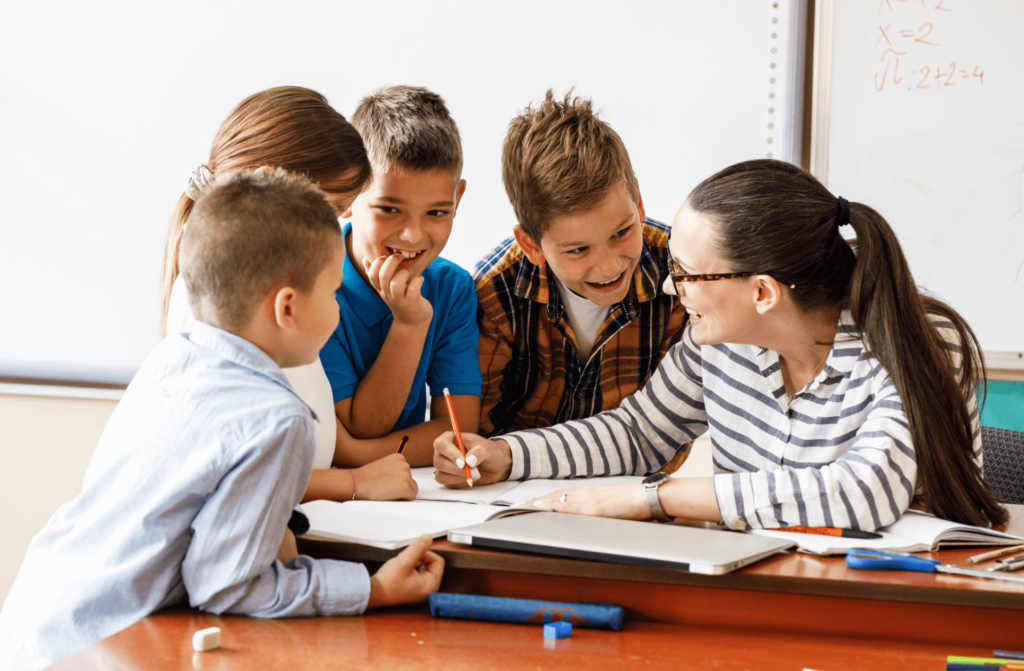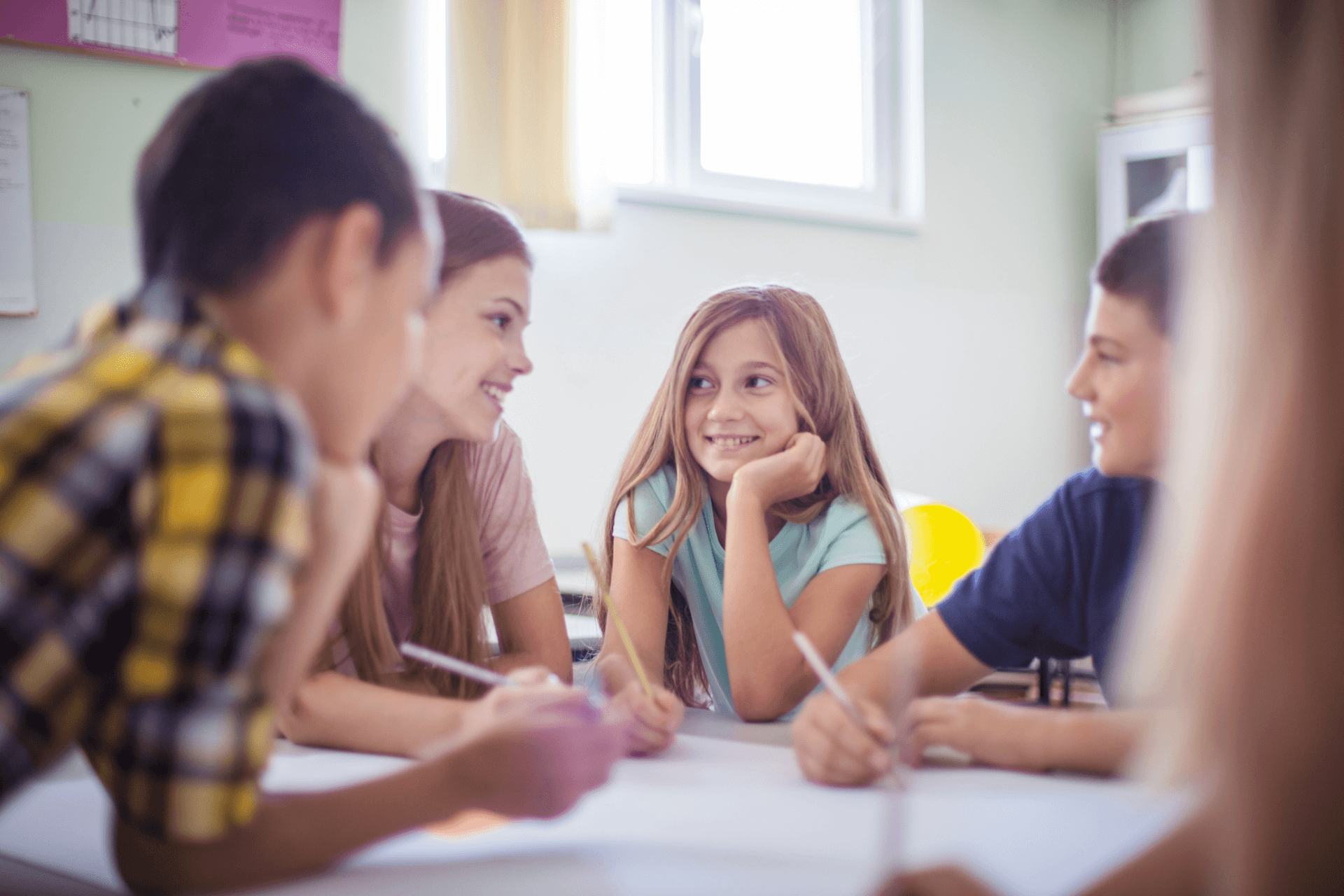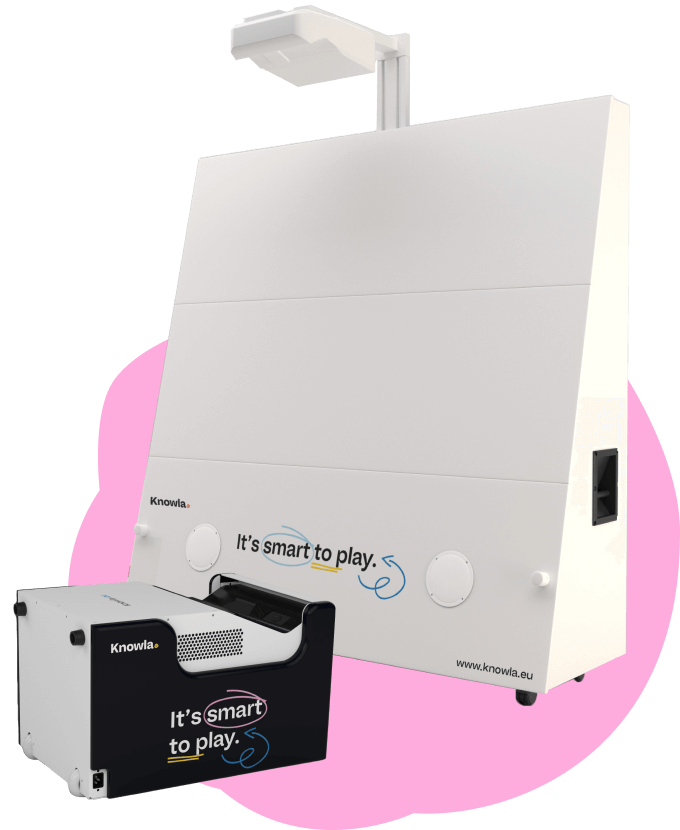It doesn’t have to be big changes for students to come to class smiling and ready for new challenges. Sometimes small things make us more willing to cross the threshold of the classroom.
Statistics show that 91% of students appreciate the introduction of fun in class. It also positively affects their productivity in class or increases memorization of material. Those who are involved with play also show greater creativity.
Need tips on what can be changed? You’ll find them below. They will certainly allow you to make your own lessons full of fun.
Divide the lesson into blocks
It functions under the term micro- or nanolearning. The premise is quite simple. Instead of dedicating and engaging students for an entire hour, divide the material into smaller blocks (about 5-15 minutes long with a short break). Within them, present a condensed dose of knowledge or engage in a game, experiment or group work. Mix methods within a lesson hour and keep their attention with emerging new activities.
Use a variety of techniques and methods
Content lecture, while one of the simpler techniques, is also one of the least interesting and engaging. Keep in mind, however, that new students come to you each time with new interests, skills and abilities.
Try different techniques and ideas. Group work? Flipped classroom? Games? Technology? Robot programming? Theatrical performances? These are just a few examples you can reach for.
Don’t be afraid to try and test new things. If your students see that you are trying, they will definitely appreciate it. Even despite a few mistakes and shortcomings.
Open up to creativity
It slumbers in every person, you just need to bring it out. Be open to new ideas and connections. Allow interest in other teachers’ games and suggestions.
Don’t forget about children, whose layers of creativity are still large. Give them the opportunity to show it. They will surely surprise you.
Let children gain knowledge on their own
Nothing teaches like doing your own work and solving problems yourself. The project method, STEAM, doing experiments and experiments will work great here.
Let the students get to the bottom of the problem on their own and, with a little support, steer toward the correct solutions. In doing so, they take responsibility for their own educational process. Needless to say, they gain many practical skills along the way including critical thinking and information retrieval skills.
Give students a choice
Children have very limited influence over their own education. Give them that power! Let them choose e.g.: the next activity, the topic or the way to implement it. This will give them some sense of agency. They will feel appreciated and it will show them that they have an impact on their own educational process. They will also improve their own decision-making or cooperation skills. Let’s not forget about fun, as they will be able to choose a form of giving the material that is more enjoyable for them.

Use realistic examples and interests
“And why should I learn it?” – every teacher has probably heard. Demonstrate the knowledge gained in practice. Implement real-life examples. Then no one will be able to say that it is useless anymore, and what’s more, it will perhaps make someone interested in the topic.
Also use students’ well-known hobbies or other current situations and trends. You can also showcase your own interests. Everyone’s eyes brighten when we discuss something we enjoy.
Allow a little movement
Fun is also movement.
During the break, orchestrate (within the blocks mentioned earlier) active rest for body and mind. Even a little physical exercise increases the release of endorphins and oxygenates the brain.
Movement can also be thought of within the framework of other techniques, games that at the same time fulfill educational values. We are talking, for example, about organizing a poster session in which students move freely around the classroom, or solutions such as Knowla, which allows students to actively throw balls and learn at the same time.
A change of scenery (e.g., a lesson in a park), visiting a cultural or natural site can also help.
Allow students to interact with each other
Learning is a social activity, and although it is usually conducted by a teacher, peers will sometimes be much better able to help understand an issue. It is also conducive to sharing experiences or focusing on aspects that are important to students.
Children socialize with each other and cooperate. They experience educational experiences together, including successes, failures. They learn from each other’s mistakes.
Create habits and rituals
They allow you to achieve long-term goals and build healthy habits or strategies for managing your own activities. They also build feelings of security and stability.
Make certain fixed elements of the activity that students look forward to. It could be something at the beginning of the day to give them energy or self-confidence. It could also be something at the very end of the day so they can go home with a sense of accomplishment. How about some super fun activities to top off each Friday?
Gamification
Gamification is the use of some mechanics taken from games in real life. It can be a points system that can be exchanged for certain rewards. Watching the progress bar of your own education. Achievements that can be earned. Challenges or sidequests that allow you to gain additional knowledge.
Gamification has proven statistics regarding the involvement of participants in the process.
Use games and technology
They are present in the world of children and arouse interest, which is, after all, the point. By choosing the right game and technology for your classes, you can disenchant boring and advanced topics. In addition, it is learning through practice or solving problems yourself, so it will be remembered longer too.
If you’re wondering how technology and games can promote education, take a look at Knowla‘s offerings. We have interactive multimedia devices that can be operated with pens or balls thrown at the image. Various packages of games and activities are available. They not only provide a lot of excitement as well as fun, but also their themes are in line with the core curriculum.
Sources:


